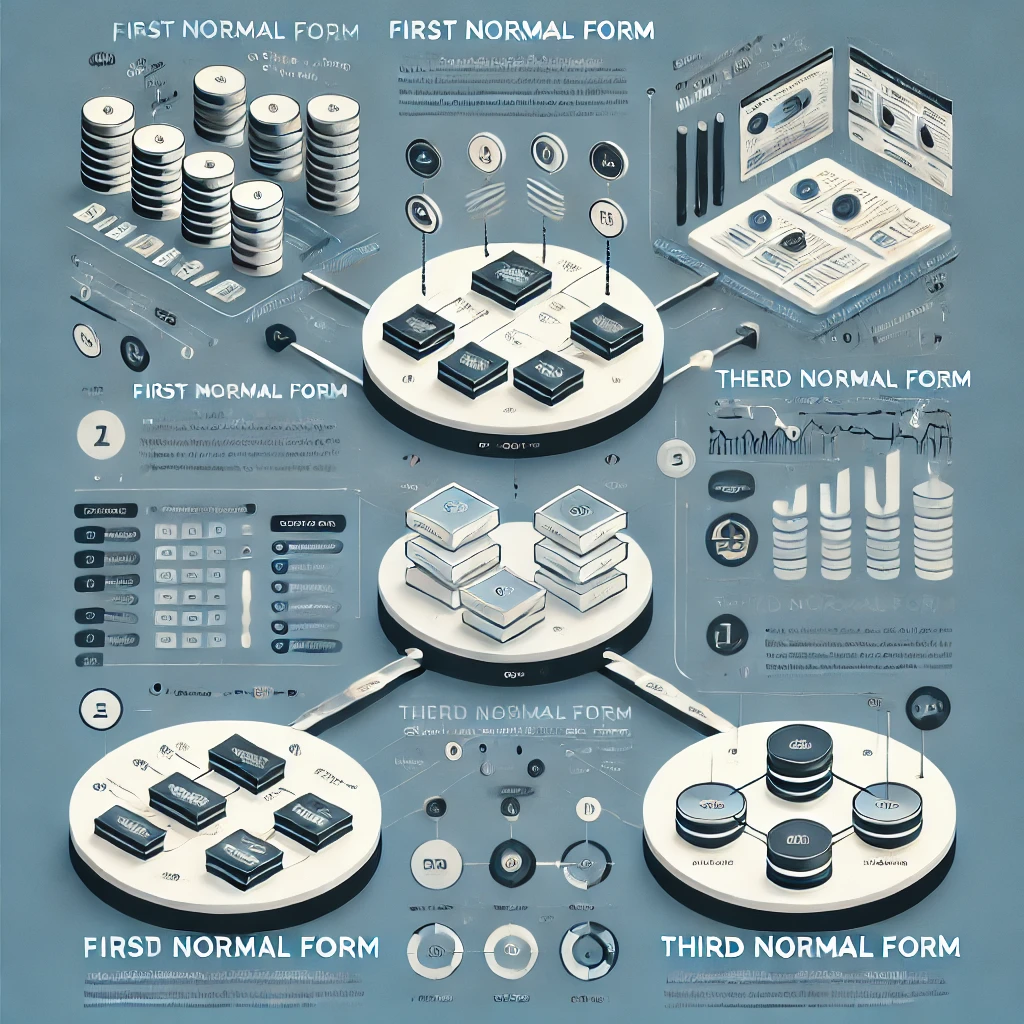Introduction
Efficient database design is the foundation of effective data management. Database normalization techniques help in structuring your database to reduce redundancy and ensure data consistency. This guide provides practical examples with tables to explain normalization forms and how to apply them to create an optimized database design.

What is Database Normalization?
Database normalization is a process that:
- Organizes data into logical tables.
- Reduces redundancy and duplication.
- Ensures data consistency through relationships.
Key Database Normalization Techniques with Examples
1. First Normal Form (1NF)
A table is in 1NF if:
- Each cell contains a single value (atomic).
- Each record is unique, with a primary key.
Example (Unnormalized Table):
| OrderID | Product1 | Product2 | Quantity1 | Quantity2 |
|---|---|---|---|---|
| 1 | Pen | Notebook | 2 | 1 |
| 2 | Pencil | Eraser | 5 | 3 |
Normalized Table (1NF):
| OrderID | Product | Quantity |
|---|---|---|
| 1 | Pen | 2 |
| 1 | Notebook | 1 |
| 2 | Pencil | 5 |
| 2 | Eraser | 3 |
2. Second Normal Form (2NF)
A table is in 2NF if:
- It is in 1NF.
- All non-key attributes depend on the entire primary key (no partial dependency).
Example (1NF Table):
| OrderID | ProductID | ProductName | CustomerName |
|---|---|---|---|
| 1 | 101 | Pen | John Doe |
| 1 | 102 | Notebook | John Doe |
Normalized Tables (2NF):
- Products Table:
| ProductID | ProductName |
|---|---|
| 101 | Pen |
| 102 | Notebook |
- Orders Table:
| OrderID | ProductID | CustomerName |
|---|
| 1 | 101 | John Doe |
| 1 | 102 | John Doe |
3. Third Normal Form (3NF)
A table is in 3NF if:
- It is in 2NF.
- There are no transitive dependencies (non-key attributes depending on other non-key attributes).
Example (2NF Table):
| OrderID | CustomerID | CustomerName | CustomerAddress |
|---|---|---|---|
| 1 | 201 | John Doe | New York |
| 2 | 202 | Jane Smith | Los Angeles |
H3: Benefits of Database Normalization
- Reduces Redundancy: Optimizes storage by removing duplicate data.
- Improves Data Integrity: Ensures consistent and accurate data.
- Enhances Scalability: Simplifies updates and makes the database easier to expand.
To further enhance your database, read our guide on How to Optimize SQL Query.
Conclusion
Understanding and applying database normalization techniques can significantly improve the efficiency and performance of your database. By following the steps outlined above, you can reduce redundancy, ensure data consistency, and make your database more maintainable. Start normalizing your data today for better results!


